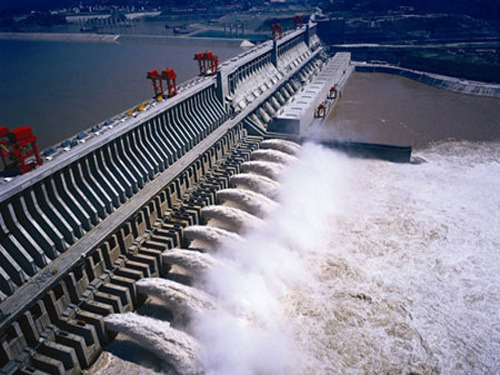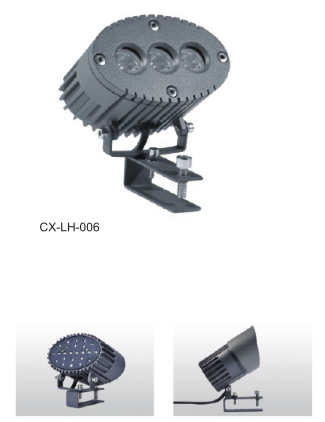
After Shanghai, Nanjing, Shandong, Hunan, Jiangxi and Gansu announced the "local version" of the reform program, the China Securities Journal reporter was informed that the reform programs in Guangdong, Beijing, Zhejiang and other places have also taken shape and will be released in the near future. Following the "four reforms" of the six central SOEs, the reform of local state-owned assets has blossomed, and a new round of state-owned asset reform has entered the "fast track."
Statistics show that as of July 31, 194 listed companies involved state-owned assets reforms. Among them, the three industries of chemical industry, commercial and department stores, and real estate have become "emphasized." Market analysts said that the theme of state-owned fund reform covers a wide range of topics, and more involved in the blue-chip stocks, the obvious role in the overall market performance, there is no doubt that the secondary market investors focus on the plate.
"Local Edition" program blossoms everywhere
"The reform plan has been issued to municipal level 1 enterprises and is expected to be officially released in early August." A person familiar with the matter told reporters at the China Securities Journal that Beijing's state-owned asset reforms will be officially launched soon.
In terms of mixed ownership, as an important venue for state-owned equity transactions, the latest news released on the Beijing Property Exchange on July 31 revealed the path of mixed ownership reform. Wu Yanchuan, president of Beijing Equity Exchange, introduced that in the first half of the year, private companies and other non-state-owned capital transferred 148 state-owned property rights projects, accounting for 80.43% of all listed projects, and the transaction value was 4.115 billion yuan, accounting for 23% of all listed projects.
“Incremental means such as increasing capital and expanding stocks should be the main means for realizing mixed ownership in the future.†Wu Yuchuan stated that in terms of serving the development model of a mixed ownership economy, the Beijing Stock Exchange has completed a capital increase and share expansion project for a central company, increasing the amount of funds by nearly 10 billion yuan. Effectively promoted a number of state-owned enterprises such as China Chemical Industry and AVIC to enter the market for capital increase and share expansion.
The new round of state-owned assets reform in Gansu Province was officially launched on July 30. In this round of reforms, the focus of the state-owned assets reform in Gansu Province will focus on clarifying the scope of state-owned assets supervision, state-funded supervision and management, state-funded supervision methods, state-owned assets operation model, and state-owned capital investment. In the supervision of state-owned assets, classification and supervision shall be implemented in accordance with competition, functional and public services. The operating model explores the establishment of state-owned assets supervision and management institutions, state-owned capital investment and operating companies, and state-owned production and operation enterprises. State-owned capital invests upwards, and state-owned capital focuses on areas such as feature-dominated industries, strategic emerging industries, and public basic industries.
It is reported that the state-owned assets reform program of Zhejiang Province has been submitted to the Zhejiang Provincial Government, and has passed the examination and approval. After the review and approval of the leading group, it can be officially released.
A related person from a Guangdong province company said in an interview with reporters that Guangdong's state-owned and state-owned enterprise reforms have also been formulated and may be issued in the near future. Guangdong SASAC will select 40 to 50 companies under its pilot system and institutional innovations to carry out trials on compensation system reforms, equity incentives, employee shareholding, etc., in order to try out the connection between state-owned capital and social capital, and the management of mixed-ownership enterprises. Employees' shareholding methods, investor's management list, and other reform measures.
Market-oriented reform promotes mergers and acquisitions
According to the statistics, there are 43 first-tier enterprises directly funded by the Beijing Municipal Government, 46 state-owned enterprises listed by the municipal government, and a total market capitalization of more than 550 billion yuan. In the promotion of mixed ownership, Beijing Brigade Group BTG clearly stated that it will focus on promoting corporate restructuring and resource integration. The Group is further deepening the restructuring and reform of its organizational structure, and completed the management and control mechanism for the upward movement of capital operation and the downward movement of entity operations. change. The adjusted headquarters of the group is a strategic industrial investment company with investment and tourism service industry and related industries as the core. It implements investment financing, capital operation and group management and control around the development strategy.
“This may mean that the BTG Group will transition to a state-owned capital operating company.†Shen Meng, executive director of Chamson Capital, said that the BTG Group's main businesses are the catering industry and the hotel industry. The market competition is fierce, and some industries are facing As an international competitor, the First Brigade is faced with great development pressure. There are quite a few listed companies in the Brigade, and the degree of asset securitization is relatively deep. If it is transformed into a state-owned capital operating company, it will be conducive to the development of the company.
In Guangdong, according to the website information of the Guangdong State-owned Assets Supervision and Administration Commission, there are 21 state-owned enterprises directly subordinate to the Guangdong Provincial State-owned Assets Supervision and Administration Commission of the People's Republic of China. According to the main business scope, there are three types of state-owned enterprises. The first category is the state-owned holding group established by the four previous state-owned enterprise reforms of Guangxin, Guanghe, Guangye and Guanghong (now merged into the business holding group). The assets of these groups are mostly operating assets. The company's resources are relatively abundant; the second category are the six state-owned enterprises that are mainly public utilities and infrastructures, including the Airport Group, the Hydropower Group, the Yudean Group, the Transportation Group, the Yuehai Group, and the shipping group; the third category is the tourism holding group and construction. The 11 companies such as the Industrial Group currently do not have a state-owned group of listed companies.
The “Twelfth Five Year Plan†of the Guangdong Provincial State-owned Assets Supervision and Administration Commission proposed that by the end of 2015, the rate of asset securitization exceeded 60%, and currently it is only about 20%. According to analysts at Essence Securities, the pace of securitization of state-owned assets in Guangdong needs to be accelerated, and business competition enterprises have a lot of room for integration.
According to the data from the Zhejiang State-owned Assets Supervision and Administration Commission, at present, the number of mixed ownership enterprises at all levels in Zhejiang Province is about 70%, and the securitization rate is 37.4%. There are 10 state-controlled listed companies in the provincial enterprises and 22 state-controlled listed companies in all cities and counties in the province.
Investment Theme: Industry Integration
According to the "Cattle and Bull Finance" data of Golden Card, the 194 listed companies involved in state-owned asset reforms covered 44 industries, and the three industries with the largest number of companies were chemical, commercial and department stores, and real estate, with 19, 16, and 15 companies respectively.
The data shows that the listed companies involved in the reform of state-owned assets have different industries due to their geographical differences. Among them, Shanghai is mainly concentrated in real estate and building materials, Shandong and Anhui are mainly concentrated in non-ferrous metal and special equipment manufacturing enterprises, Jiangxi is mainly concentrated in transportation and energy, Jiangsu is mainly concentrated in manufacturing, and state-owned enterprises in Hubei and Chongqing are mainly concentrated in public Business and transportation, department stores.
At present, the listed companies that are suspended in trading include Beijing Urban-rural, Jiangsu Haotian, Luoyang Glass, SDIC Zhonglu, Renguang Industrial, Jinshan Stock, Chunhui Shares, and Zhongshan Public Utilities. Companies that resume trading after the suspension of mergers and acquisitions are Jianghuai Automobile and Ankai. Passenger cars, Feile shares, Jinfeng Investment, Phoenix Optics, and Cuiwei. Among them, the stock price of Jinfeng Investment doubled within two weeks after the resumption of trading, Phoenix optical resumption within one month of the stock price to double, Feile shares after the resumption of trading has also increased significantly. As Jiangqi Group promotes its overall listing, Jianghuai Automobile and Ankai Bus have resumed trading on July 11 and have both increased by more than 30%.
Chen Bin, the managing director of Golden Card Interoperability, stated that the most important feature of state-owned asset reform is industry consolidation, including the integration of different platforms, the same platform integration, the injection of quality assets, the overall listing, the establishment of a new platform to integrate high-quality assets lP0 listing and other forms. For the secondary market investors, companies with the potential for industry consolidation, small scale of total market value, and poor performance in the same controlling shareholder are more likely to be targets of early reform and deserve attention.
Led Tile Slots Lamp is commonly used in ancient architectural lighting, one light and one light, and the other side is the function of light casting.In addition, the luminaires can be equipped with a glare shield.The new energy-saving lamps with high power LED as the light source adopt optical grade PMMA high efficiency lens with low light loss and good illumination.The unique switching constant current source technology ensures that every LED works stably.It has good light transmittance, dust prevention and waterproof performance. The outer shell is made of aluminum alloy die casting parts for superconducting heat dissipation.Especially suitable for landscape architecture, ancient buildings, glazed tiles, villas, parks and other landscape decoration.The protection grade is up to IP65, which can adapt to various indoor and outdoor temperature and humidity environments.The color has the effect of red/yellow/blue/green/white/color change/full color etc.

Product size

Led Tile Slots Lamp,Led Project Lamp,Led Night Lamp,Led Mood Lamp
Jiangsu chengxu Electric Group Co., Ltd , https://www.satislighting.com